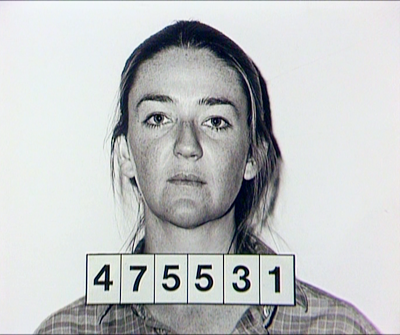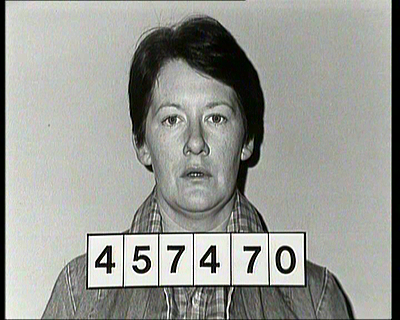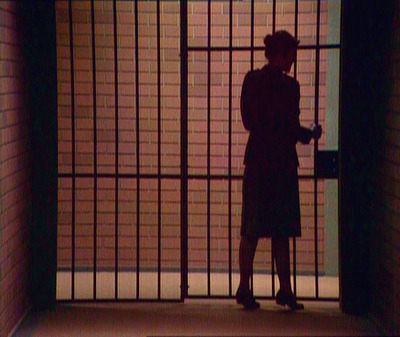


Hi there and welcome to Ado's Blog. I am obsessed with nostalgia, especially 1960s & 1970s nostalgia and I enjoy nothing more than reflecting on days and times that have sadly long since gone! So join me, as I take a nostalgic gander down Memory Lane and celebrate all things past and occasional present, both good and bad! (All images used that are copyrighted are copyrighted to their respective publishers and are only used here for review purposes.)






Hugo Z. Hackenbush is a veterinarian illegally employed as the medical director of the Standish Sanitarium, which is owned by Judy Standish. One of things they have to do to save the sanitarium from developers is to keep Mrs. Upjohn as a patient. She, of course, insists on being treated only by Dr. Hackenbush. To try to expose Groucho as a fraud, the bad guys call in Dr. Steinberg.
The film uses this plot as the framework around which to organize a series of skits. Among them is the "Tutsi Fruitsy Ice Cream" skit, in which Tony gives Hackenbush a tip on a horse, but all in code, so that Hackenbush has to buy book after book from Tony to decipher the code.


Another skit involves Tony and Stuffy trying to interrupt a frame job involving Hackenbush's seduction by a femme fatale. In the end, failing to dissuade Hackenbush from his interest in the woman, they end up disrupting the frame-up by concealing themselves under layers of wallpaper, using a bucket perched on Stuffy's head to hold the paste.
The overall plot involves Tony and Stuffy's friend, Gil Stuart's, difficulties with his racehorse, Hi-Hat, who seems hopeless as a racer.


The screenplay went through numerous outlines, treatments and drafts before arriving at its final version. As they had with A Night At The Opera, the Brothers honed the comic material during a Vaudeville tour.
Groucho's character was originally named "Quackenbush" but was changed to "Hackenbush" over fear of a lawsuit by a real Dr. Quackenbush.
During production, Irvine Thalberg, who had brought the Marx Brothers to MGM, died suddenly of pneumonia at age 37. It is generally believed that the studio never gave the proper care after Thalberg's death to the Marx Brothers and that the three movies made at MGM afterward are weaker than the first two.


Hong Kong Phooey was created by Hana Barbera and was an animated series that first aired on ABC Saturday morning from September 7, 1974 to December 21, 1974. The main character, Hong Kong Phooey, is a Superhero who uses Chinese Martial Arts to fight crime. Hong Kong Phooey is the secret alter ego of Penrod "Penry" Pooch, a "mild-mannered" police station janitor. Hong Kong Phooey/Penry Pooch is also an anthropomorphic dog in a world populated mainly by normal humans.
Like many Saturday morning animated series of the era, Hong Kong Phooey contained a laugh track.

The series stars Hong Kong Phooey, the “number one super guy” who travels about the city in his “Phooeymobile”, fighting crime with the aid of his manual, The Hong Kong Book Of Kung Fu. The stories begin at the police headquarters, where Hong Kong Phooey's alter ego, Penry, works as a mild-mannered janitor under the glare of Sergeant Flint ("Sarge"). Also at the police station is Rosemary, the telephone operator, who has a crush on Hong Kong Phooey. After Rosemary gets a call and explains the crime, Penry runs into a filing cabinet and (always getting stuck) transforms himself into Hong Kong Phooey.
Despite the theme song, Hong Kong Phooey is a classic screw-up, and often fails to save the city only to be saved by his sidekick pet cat, Spot. In a few rare circumstances, Hong Kong Phooey actually does save the city, but usually as an unintended side effect of his intended attack going horribly wrong. Hong Kong Phooey is a respected superhero who always gets full credit for Spot’s success.


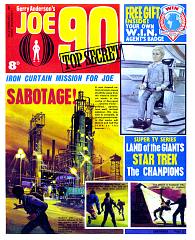

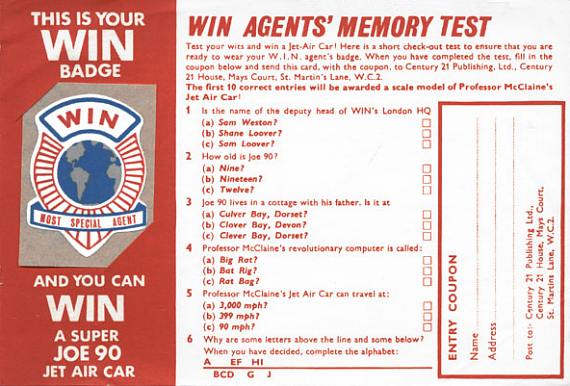




The Doctor and Jo Grant visit the Master, now held in captivity on a small island prison, after being captured by UNIT (at the conclusion of The Daemons). The Master is being held indefinitely and is the only prisoner. He is watched by CCTV and the island is patrolled by armed guards, trained to resist the Master's hypnotic powers, and even protected by minefields. He claims to have reformed but refuses to reveal the location of his TARDIS.
As they depart, the old-school patriotic governor, Colonel Trenchard, tells them that some ships have been mysteriously disappearing. The Doctor cannot resist investigating and he and Jo are soon attacked, while examining a Sea Fort, by an underwater Silurian. This man-sized bipedal lizard is called a 'Sea Devil' by a crewmember who's been driven half mad. They escape to the nearby naval base, HMS Seaspite run by the efficient Captain John Hart; despite the Doctor's eccentric behaviour (such as claiming to have known Nelson personally), an alliance forms. Hart is in charge of the adaptation of the sea fort for use as a SONAR testing station.



The Doctor persuades Walker to allow him a final attempt at negotiation, but in the meantime the Sea Devils capture the naval base. They have been inspired to such actions by the Master, who still wishes to instigate a war. The Master then forces the Doctor to help build a machine to revive Sea Devil colonies all over the world. Returning to the Sea Devil base the Master activates the device, whereupon the Sea Devils imprison both Time Lords, as they are now both equally useless to them. However, The Doctor has sabotaged the machine and he and the Master escape the base using escape equipment from the captured submarine.
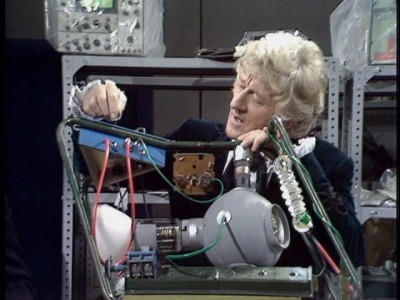
| Doctor Who book | |
|---|---|
 | |
| Doctor Who and the Sea-Devils | |
| Series | Target Novelisations |
| Release number | 54 |
| Writer | Malcolm Hulke |
| Publisher | Target Books |
| Cover artist | Chris Achellios |
| ISBN | 04-426-11308-X |
| Release date | 17 October 1974 |

Prisoner was an Australain Television Soap Opera which was set in the Wentworth Detention Centre, a fictional women's prison. The series was produced by the Reg Grundy Organisation and ran on Network Ten for 692 episodes from 27 February 1979 to 11 December 1986.
The series was inspired by the 1970s British television drama Within These Walls, which had achieved moderate success in Australia (Prisoner producers even approached Googie Withers ofWithin These Walls to play the role of Prisoners Governor, an offer that she declined). Because of an injunction brought by UK-based ATV, which considered the title too similar to their own series The Prisoner, it was originally not possible for overseas broadcasters to screen the show under the name Prisoner, which necessitated a name change. It was known as Prisoner: Cell Block H in the UK and the United States (though this extended title was not shown onscreen), and as Caged Women in Canada.

Prisoner was created by Reg Watson, who had previously produced the British soap opera Crossroads from 1964 to 1973, and would go on to create such popular Australian soaps as The Young Doctors, Sons & Daughters and Neighbours. Initially conceived as a sixteen episode stand-alone series, the storylines primarily concentrated on the lives of the prisoners and, to a lesser extent, the officers and other prison staff.
The themes of the show were often radical, including feminism, homosexuality and social reform. When the series launched in 1979, the press advertising used the line "if you think prison is hell for a man, imagine what it's like for a woman". The series examined in detail the way in which women dealt with incarceration and separation from their families. Within the walls of the prison, the major themes of the series were the interpersonal relationships between the prisoners, the power struggles, friendships and rivalries. To a certain extent, the misfits who found themselves within the walls of the Wentworth Detention Centre became each other's family, with Bea Smith as a mother figure. Several lesbian characters were featured throughout the show's run, notably prisoners Franky Doyle and Judy Bryant, along with prison officer Joan Ferguson.

The viewers’ introduction to the world of Wentworth Detention Centre involved the arrival of two new prisoners, Karen Travers (Peta Toppano) and Lynn Warner (Kerry Armstrong). Travers had been charged for the murder of her husband, while Warner protested her innocence after being convicted of the abduction and attempted murder of a child. Both women are sent to the prison’s maximum security wing (H Block) where they are horrified by their new surroundings. Karen finds herself face-to-face with a former lover, prison doctor Greg Miller (Barry Quin), and is sexually harassed by her violent, bullying lesbian cellmate, Franky Doyle (Carol Burns). Lynn finds herself ostracised by the other prisoners because of her crime (prison populations are known for their intolerance towards criminals who commit offences against children) and is terrorised by the prison’s “top dog”, the self-styled “Queen” Bea Smith (Val Lehman), who “accidentally” burns her hand in the laundry steam press in one of the series’ most iconic scenes.
The other prisoners are rather less volatile, including the elderly, garden-loving Jeanette “Mum” Brooks (Mary Ward), a bickering comic relief double act with teddy-clutching misfit Doreen Anderson (Colette Mann) and old lag Lizzie Birdsworth (Sheila Florance), and seductive prostitute Marilyn Mason (Margaret Laurence), who entices prison electrician Eddie Cook (Richard Moir) into amorous encounters around the prison. The prison officers, or “screws” as they are called by the women, comprised the firm but fair Governor Erica Davidson (Patsy King), flanked by the diametrically opposed dour Deputy Governor, Vera Bennett (Fiona Spence), dubbed “Vinegar Tits” by the inmates, and compassionate senior officer Meg Jackson (Elspeth Ballantyne).




Prisoner premiered in Australia on 27 February 1979 and instantly struck a chord with the audience, initially prompting the producers to extend the series from a sixteen-part serial to twenty-parts, and then to an ongoing concern. This decision immediately impacted on format and characterisation, and a number of changes were made to the series.
Most significantly, the series’ production schedule increased from making one-hour long episode per week to two episodes per week. This led to the departure of the show’s first breakout popular character, after just twenty episodes, Franky Doyle, when actress Carol Burns chose to leave the series, feeling that she could not continue her portrayal with the increased production rate. Introduced as a borderline psychotic given to bouts of furniture-throwing violent rage, Franky’s character was explored through her unrequited love for fellow inmate Karen Travers, who warmed to her and tried to teach her to read, finally emerging as an unloved, illiterate, deeply frustrated social misfit and a tragic anti-heroine. Franky’s exit saw her escaping from Wentworth accompanied by Doreen Anderson, and shot dead by a policeman after being on the run for three weeks.
As the series began to gather momentum, new story arcs were introduced. Karen Travers decided to appeal against her sentence and was eventually released from prison, resuming her romantic relationship with Dr. Greg Miller and becoming involved in prison reform. As original characters began to leave the series (Mum Brooks, Lynn Warner, Karen and Greg all appeared beyond the initial sixteen episodes, but had made their exits by the end of the 1979 season, with Greg leaving early 1980), new characters arrived: hulking husband-basher Monica Ferguson (Lesley Baker), sneering career criminal Noeline Burke (Jude Kuring), idealistic murderess Roslyn Coulson (Sigrid Thornton) and imprisoned mother Pat O’Connell (Monica Maughan). Chrissie Latham, a minor character seen briefly in the early episodes, returned in a more central antagonistic role, and a new male Deputy Governor, Jim Fletcher (Gerald Maguire), added a touch of testosterone to a female-dominated series.
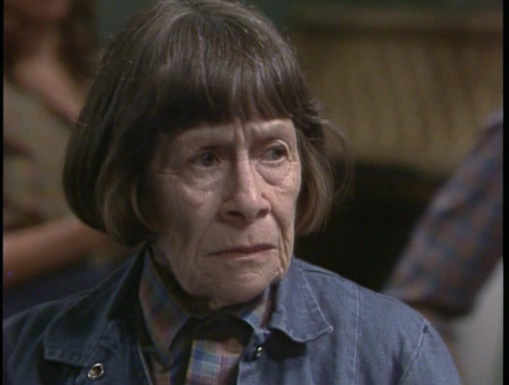
As Prisoner entered into production for a second year in 1980, the long-term format and structure to the series established the previous year was firmly in place. The characters were made up of a recognisable set of archetypes. The prison population comprised a core group of sympathetic prisoners – a top dog, an elderly inmate, a wayward youngster – and other characters, such as an antagonist who threatens the top dog’s control, a middle-class prisoner out of her depth in the prison, remand prisoners waiting for their trial and hired heavies used for “muscle”.
After the departures of early leads such as Franky Doyle, Karen Travers and Lynn Warner, the trio of Bea Smith, Doreen Burns (née Anderson) and Lizzie Birdsworth emerged as the front-line prisoners. Bea was the tough, ambivalent yet maternal leader, softened after being a mostly unsympathetic character in the 1979 episodes. The death of Bea’s teenage daughter Debbie (Cassandra Lehman) from a heroin overdose not only explained her motivation for killing her husband on her release early in the series, but also explained Bea’s uncompromising hatred of drug offenders and clouded judgement whenever children were involved. Doreen was a well-meaning but inept tragi-comic figure and Lizzie was a mischievous elderly rascal with a dicky ticker and unquenchable taste for alcohol that saw her employed in comedy storylines, whilst also maintaining a more serious dimension, sometimes contemplating dying in prison. The Bea-Lizzie-Doreen dynamic was joined early in the 1980 run by Judy Bryant (Betty Bobbitt), an American ex-pat lesbian who deliberately gets herself imprisoned to be with her girlfriend, scheming drug dealer Sharon Gilmour (Margot Knight), who became a long-term central character and part of the core group of prisoners.

The mix of officers also established a template of character types. The progressive Governor Erica Davidson, whose approach to the job was to the right of warm-hearted warder Meg Jackson, but to the left of the acidic Vera Bennett, with firm but fair Deputy Governor Jim Fletcher often switching sides between Vera and Meg. Erica herself would face an uphill struggle with untenable directives from her superiors at the Department of Corrective Services, represented by bigwig Ted Douglas (Ian Smith). As such, the storylines dealing with the prisoners’ everyday lives were somewhat cyclical – depicting harsh treatment leading to organised prisoner resistance remedied by concessions and greater freedom which the women would take advantage of, thus requiring a tightening of the prison regime.
As well as capitalising on the obvious voyueristic appeal of showcasing life in prison, the storylines which drove the series used familiar elements — smuggling, personality clashes between the prisoners, staff politics between the officers, organised prisoner resistance such as strikes and riots, a range of issue-based storylines, court cases and police investigations and escape plots. The series also made good use of cliffhangers, often involving dramatic escapes, crimes, and catastrophes befalling the prison and its inhabitants. The stories also ventured outside Wentworth with episodes featuring the private lives of the officers and the struggles of newly-released prisoners to adjust to life on the outside, including the forces that unfortunately led to recidivism. Bea Smith is released during the opening episodes, and with nothing and no-one on the outside since the drug-related death of her daughter Debbie, shoots her estranged husband dead to get revenge, thus ensuring her imprisonment for life. Elderly Lizzie Birdsworth is released when new evidence in her case reveals that she is in fact innocent of the poisoning charge she’d already served twenty years for. However, realising that there is no place for her on the outside, the institutionalised Lizzie deliberately commits a petty offence in order to return to Wentworth which, as with many long-serving inmates for whom the prison environment and rules turns into a way of life, had become home. Whilst the series did offer upbeat storylines where some characters, such as Karen Travers during the 1979 run, made it, it also made clear that for some, like Bea and Lizzie, prison life was the only option.
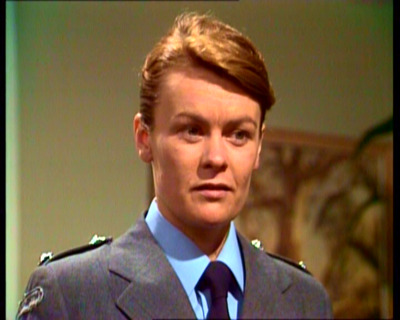
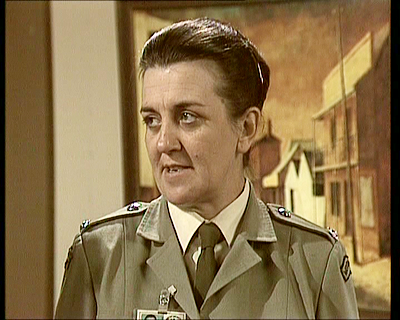
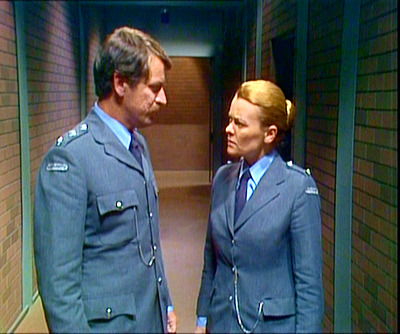
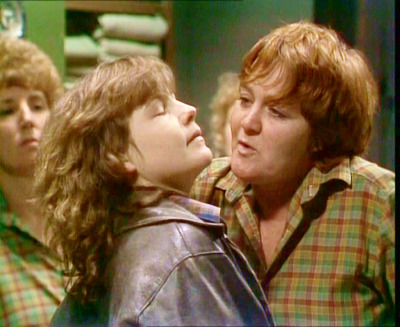
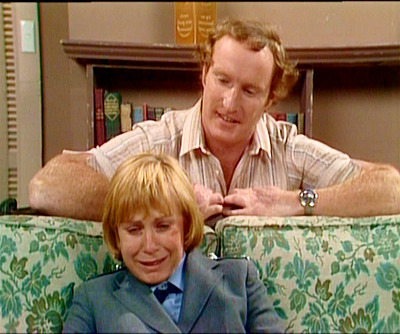
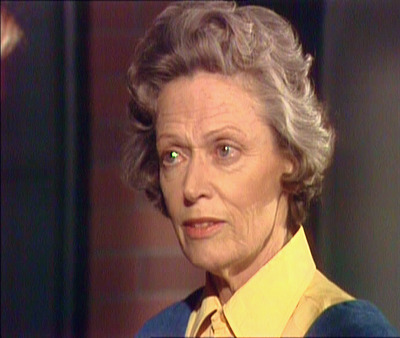
After a lengthy break over the festive period, Prisoner was then moved to an earlier slot in the Melbourne area of 7.30pm on Tuesdays and Wednesdays. With a recap of the events of 1980 on Tuesday 3 February 1981, the series resumed with episode 166 in its new slot the following evening. From episode 205 onwards, the series continued in its original 8.30pm slot. During the latter half of the 1981 season, Prisoner seemed to be moving into its next phase. Central to this shift was the exit of original character Vera “Vinegar Tits” Bennett, the unpleasant warder whom viewers loved to hate, in the most high profile cast departure since the death of Franky Doyle. Vera resigned from Wentworth, having won the job of Governor of Barnhurst.
It is at this point in the show that the steady stream of supporting characters, written into the series to complement the leading ensemble, gained in importance. The officers’ ranks were augmented by the sarcastic, militant union representative Colleen Powell (Judith McGrath), and the bespectacled and somewhat ineffectual Joyce Barry (Joy Westmore). The character of Colleen was poised to gain from the departure of Vera and then of Jim Fletcher a few months later, eventually taking over as Deputy Governor when Meg Morris turned down the offer. Amongst the prisoners, Chrissie Latham and Margo Gaffney, often written as antagonists of Bea Smith, had emerged as strong central recurring characters, as had prostitute Helen Smart (Caroline Gilmer).
Towards the end of the 1981 run, the old gang of Bea, Lizzie, Doreen and Judy took a back seat to the proceedings. Bea was hospitalised for a kidney transplant operation, Lizzie was briefly paroled and Doreen and Judy were temporarily transferred to Barnhurst. The main narrative focus of the late 1981 storylines was on three new characters introduced as major players: cocky gangster’s moll Sandy Edwards (Louise Ne Hay) and the highly intelligent and enigmatic Dr. Kate Peterson (Olivia Hamnett) were both convicted of murder while the cunning, villainous long-term criminal Marie Winter (Maggie Millar) was transferred from Barnhurst. The cliffhanger to the 1981 run involved the newly-arrived Marie manipulating Sandy into starting an explosive prison riot to protest the increasingly oppressive prison conditions following new directives from the Department. With a copy of the prison keys and improvised weapons, Sandy leads the marauding women through the prison, and in the subsequent siege situation, new rookie officers Janet Conway (Kate Sheil) and Steve Faulkner (Wayne Jarratt) are taken hostage.
The first few months of the 1982 run concentrated on the power struggles, scheming and double-crossing between the characters of Sandy, Marie and Kate, which involved a number of murder attempts. As Sandy and Marie clashed for the top dog position, Kate plotted to secure her release from Wentworth, revealing her true manipulative colours and playing different sides against each other for her own advantage. When all three were written out of the series once their projected storylines had run their course, the focus returned once more to Bea and company. However, by this point after so many dramatic events in the prison and the Bea-Lizzie-Doreen-Judy quartet still cosily ensconced as the leading characters, the series had started to show its age. In many subtle, not immediately apparent ways, it was the end of an era and it was clear that a radical shake-up was needed to give the series a new lease of life.
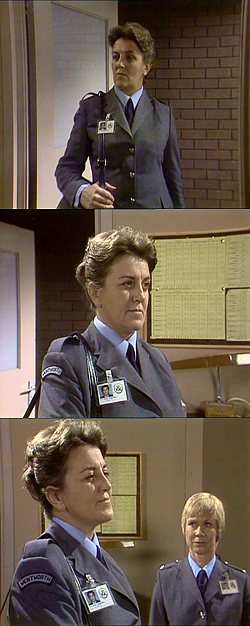
That new lease of life was provided by the arrival of a formidable new officer – Joan “The Freak” Ferguson (Maggie Kirkpatrick). Enforcing her will through her black leather-gloved fists, molesting prisoners during unofficial “body searches” and taking her cut on all the prison rackets, Ferguson was just as corrupt, calculating and sadistic as some of the worst prisoners, but was on the other side of the bars and therefore untouchable. The addition of Joan Ferguson had also, by necessity, along with the arrival of another prisoner, softened formerly hard nosed Colleen. Despite her softening, she maintained her sarcastic sense of humor.
Bea Smith was soon awoken to Joan’s villainy, and the two became deadly enemies. Joan schemed to beat Bea, while Bea plotted to oust Joan, thus beginning a new standard story arc for the series – in which the women of Wentworth try to “get rid of the Freak”. But Ferguson wasn’t going anywhere, having swiftly become an integral presence in the show, and increasingly its most iconic character, much like J.R. Ewing in Dallas or Alexis Colby in Dynasty.
Other developments during this period were the return of Chrissie Latham and Margo Gaffney to the show to bolster the ranks of the now somewhat empty-looking cellblock as Doreen and Judy were released from Wentworth. Doreen left the series, while Judy took charge of a new halfway house for ex-prisoners, named Driscoll House, after its first resident, young Susie Driscoll (Jacqui Gordon). The action was then split between the prison and the halfway house, which allowed the series to explore more issue-based storylines through the Driscoll House residents. Doomed heroin addict Donna Mason (Arkie Whiteley) featured prominently both as a remand prisoner and as a temporary resident of Driscoll House. Young biker Maxine Daniels (Lisa Crittenden ) also joined as a regular cast member, flitting between Driscoll and Wentworth.
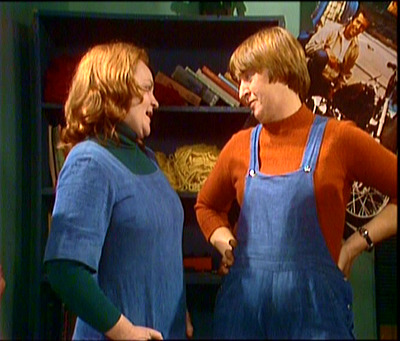


The fire spread out of control while Bea Smith and Joan Ferguson battled it out in the isolation wing. In the confusion of the prison evacuation, Barbara Fields made her way to the Governor's office to retrieve the diaries. The fire overloaded the prison's security system, engaging the riot alarm, which caused all the prison gates to automatically slam shut and lock, leaving prisoners and staff trapped in the burning prison. Fields was overcome by smoke and collapsed in the Governor's office as the flames surrounded her (and the diaries) while two other inmates, “Mouse” Trapp (Jentah Sobott) and Paddy Lawson (Anna Hruby), found themselves trapped. Paddy managed to escape through the air ducts, while a panicking Mouse ran through the corridor trying each door in turn. She then found the source of the fire in one of the doors, but the mineral turpentine exploded in her face sending her running down the corridor screaming with the top half of her body on fire; her body was later recovered. Meanwhile, Governor Erica Davidson valiantly ran back inside the prison to try to unlock the security gates.
Ferguson had beaten Smith unconscious, but when the gates slammed shut, she was trapped in the cell block with Smith - along with Ferguson's dropped keys - lying just out of reach on the other side of the locked gate. In the final scene of the episode, a vengeful Smith regained consciousness, and, realising that having beaten Ferguson she would now be ineligible for parole, vowed she would not pass the key to Ferguson and that the two would die right there in the fire. Both survived when Paddy, having crawled through the ducting system, found them and gave Ferguson the keys - on the condition she carry the unconscious Bea to safety. The Great Fire episode ranks as the fan favorite among Prisoner fans.

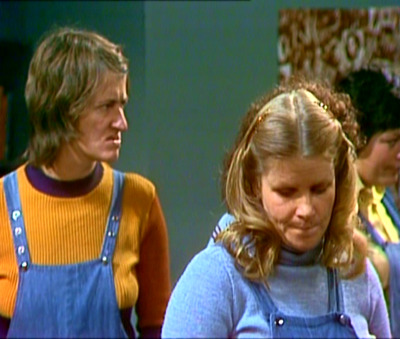
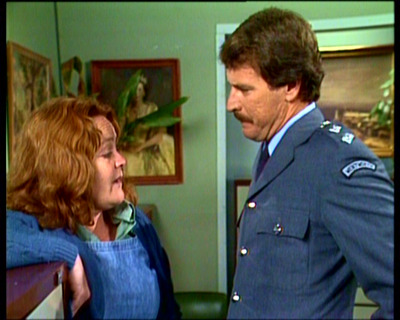
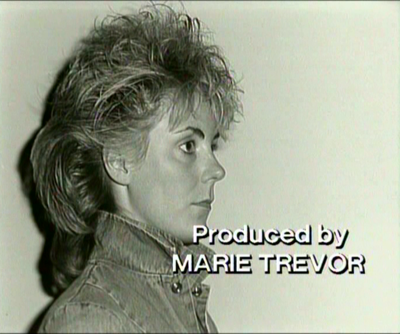
Prisoner returned in 1983 with everyone wanting to know if Paddy, Bea & Joan had survived the fire. Paddy crawled through the air ducts and found Bea and Joan. They made their way to the roof and escaped. The 1983 season was mainly characterised by a high turnover of short-term characters and storylines, but continued the rivalry between Bea and the Freak. More core cast departures took place as Chrissie Latham, Margo Gaffney and Erica Davidson all left the series, and a major new player, the callous, menacing and brutal double murderess Nola McKenzie (Carole Skinner), entered the fray as a new adversary for Bea and a partner in crime for Joan, becoming the first prisoner to actively collude with the Freak, running contraband rackets and plotting to seize power from the “good” top dog. Bea Smith briefly escaped from Wentworth and contacted Doreen Burns, (Colette Mann) returning for a brief cameo.
The Bea-Joan-Nola conflict reaches its height in a memorable storyline which commenced shortly after Bea was returned to the prison after her escape. Joan and Nola attempt to drive Bea to suicide by evoking the memory of her dead daughter Debbie, coercing tarot reading medium and remand prisoner Zara Moonbeam (Llona Rogers) to assist them. But the plan backfires, and it is Nola, not Bea, whose corpse is taken away from Wentworth. A few months later however, Joan finally triumphs over Bea after a major confrontation in which the sadistic screw succeeds in having her old enemy transferred to Barnhurst. Having played Bea Smith for 400 episodes, actress Val Lehman had tired of the role, feeling that all possible storylines for the character had been exhausted, and resigned from the series. Shortly afterwards, actress Sheila Florance also decided to leave, leading to the departure of Lizzie Birdsworth. This now left actress Elspeth Ballantyne, alias officer Meg Morris (formerly Jackson), as the only original cast member still in the series. (Despite leaving the series, both Lehman and Florance were very active in the Prisoner fan community, a role which Florance continued until her death in 1991 and that Lehman still maintains today)
The 1983 cliffhanger involved Lizzie and David. Lizzie was waiting to hear if she had been paroled, as Coleen came out to tell her. She found a dead body in the prison ground and David Bridges revealed himself as the killer and told Lizzie should would "be set free"...
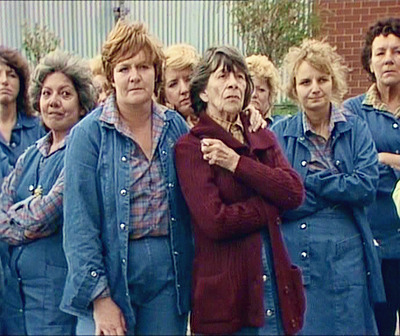
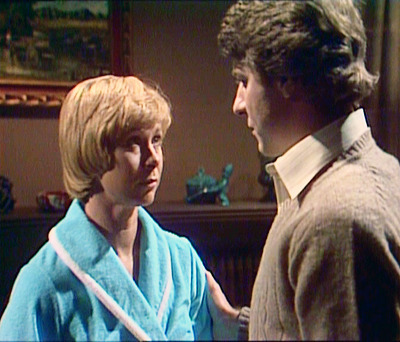

Prisoner resumed to most screens in 1984 with the picking up of the 1983 cliffhanger which involved Lizzie and evil murderer officer David Bridges. As he revealed to her he killed two inmates, she would be next.
The resolution was that Lizzie had a heart attack and when Cass came to help. When David walked her into the gardening shed he turned violent and tried to kill her but Cass decapitated him with a shovel.
With Prisoner heading towards the 1984 season and the recent high-profile cast departures, the series was retooled once again. New characters had been introduced during Bea Smith’s final few months on the show, and they now enjoyed prominent roles in the series. Ann Reynolds (Gerda Nicolson) replaced Erica Davidson as a spirited, no-nonsense new Governor and amongst the prisoners, previous background bit player Phyllis Hunt (Reylen Pearce) was given a more expanded role amidst new arrivals, such as dreamy romantic and serial bigamist Sandra “Pixie” Mason (Judy McBurney) and cool, villainous vice queen Sonia Stevens (Tina Bursill). Judy Bryant was brought back into Wentworth as a “stopgap” top dog – the Driscoll House plotline being phased out of the series after Judy had committed euthanasia on terminally ill former inmate Hazel Kent (Belinda Davey). Long term "Department" boss Ted Douglas was exposed as corrupt and left the series, to be replaced (albeit briefly) by Erica Davidson.
Some very dramatic storylines were introduced in this period, with "The Freak" briefly becoming Governor when Ann Reynolds was recovering from breast cancer and Colleen Powell was discredited - largely thanks to "The Freak's" interference. Erica Davison helped expose Ferguson during this time and Mrs Powell was reinstated. Shortly afterwards, Mrs Powell's family were murdered in a bomb explosion, in a plotline very similar to the one used earlier with Jim Fletcher.
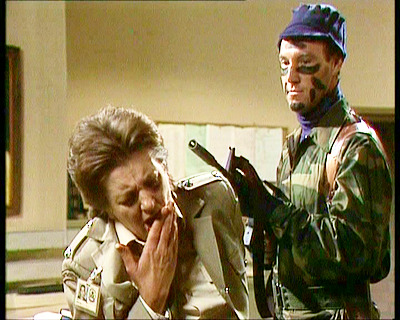
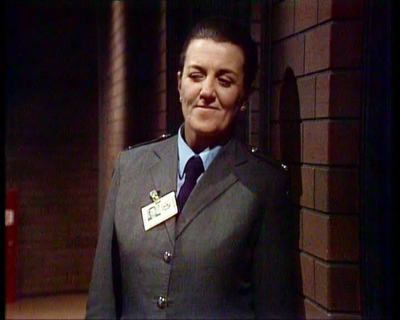
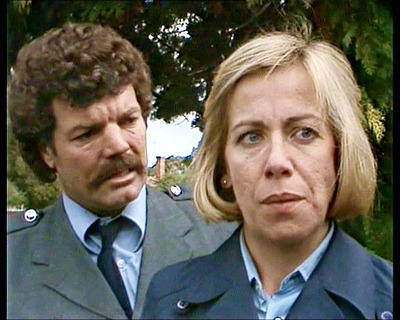
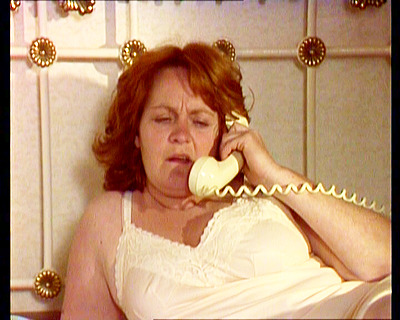
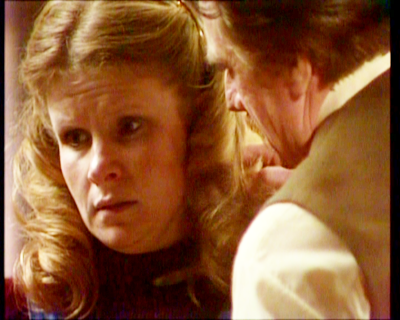
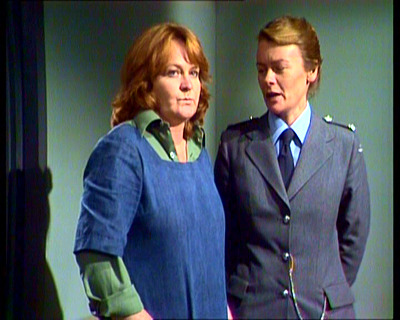
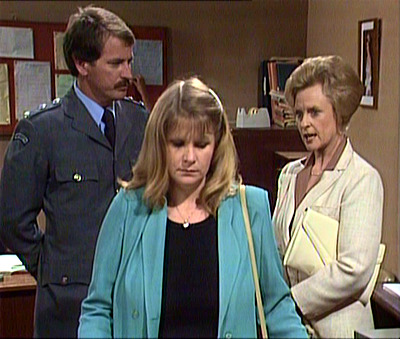
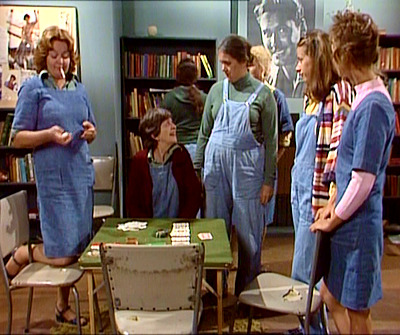
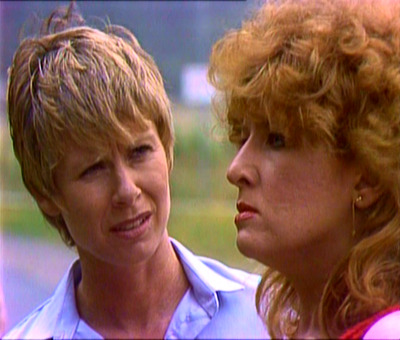
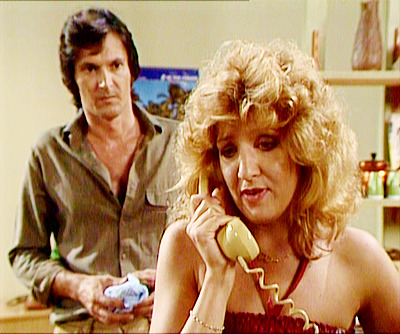
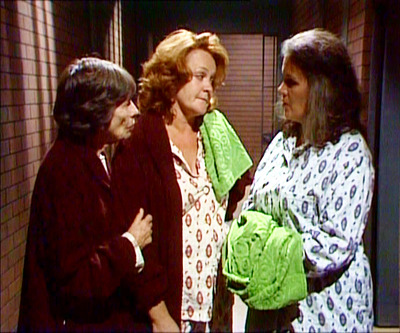

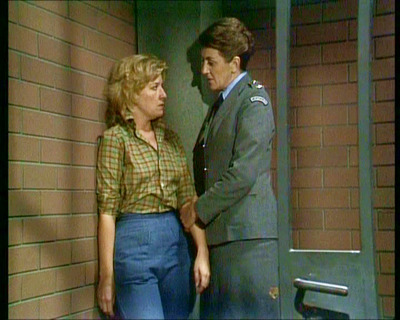

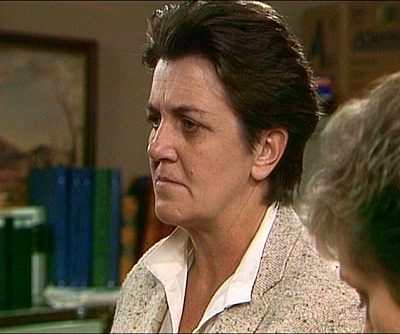
The show's producers had several weeks notice the series was ending, allowing them to craft suitable storylines leading to a strong conclusion, one which involved the final defeat of the villainous Joan “The Freak” Ferguson. The final episodes of Prisoner deal with the redemption of the misunderstood Kath Maxwell as well as concluding the ongoing dynamic between Rita Connors and Joan Ferguson. Shockingly diagnosed with terminal cancer, Rita conspires with a jaded Joan, totally disillusioned by the prison service, to rob a building society. But all was not what it seemed.
